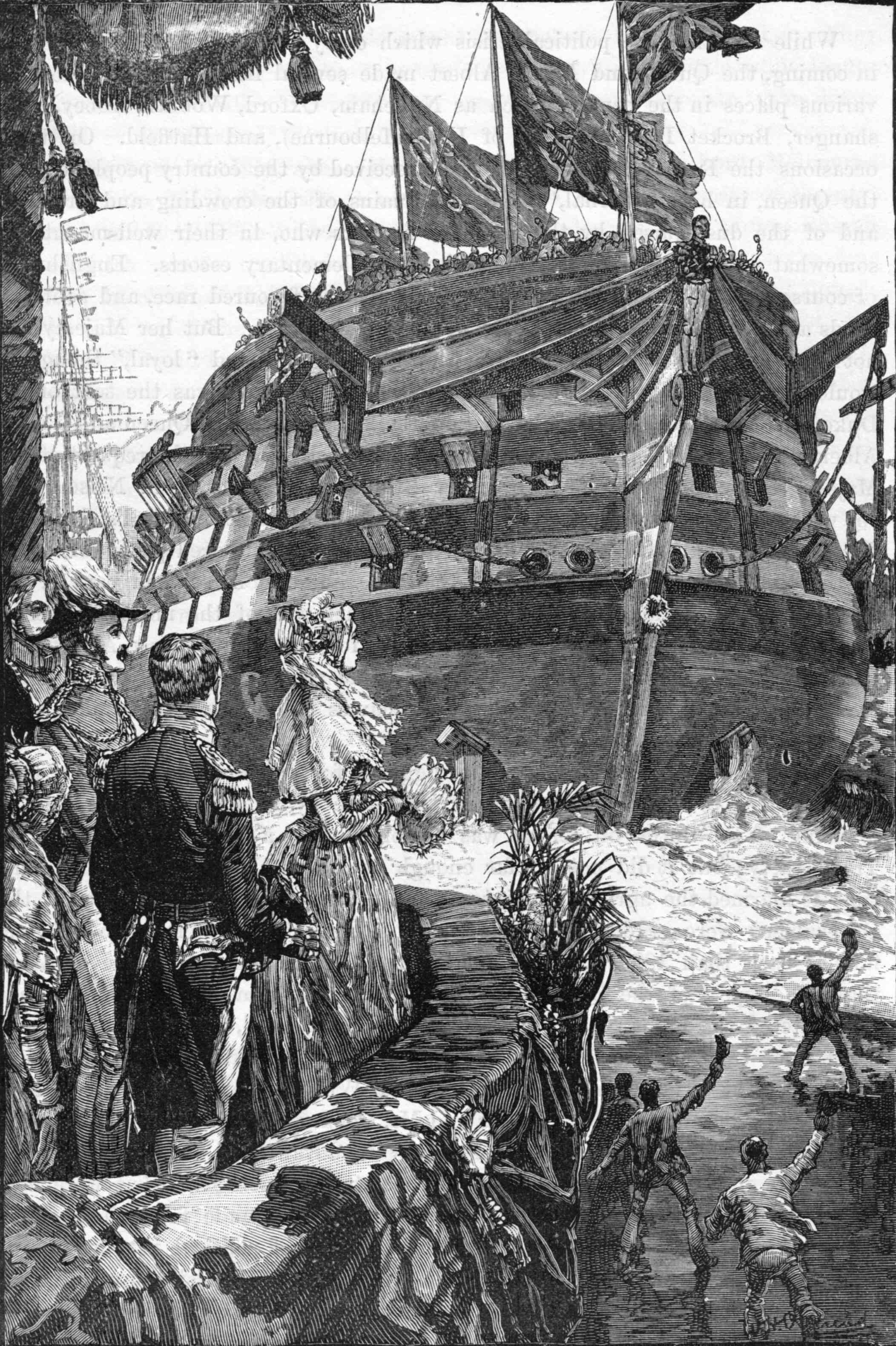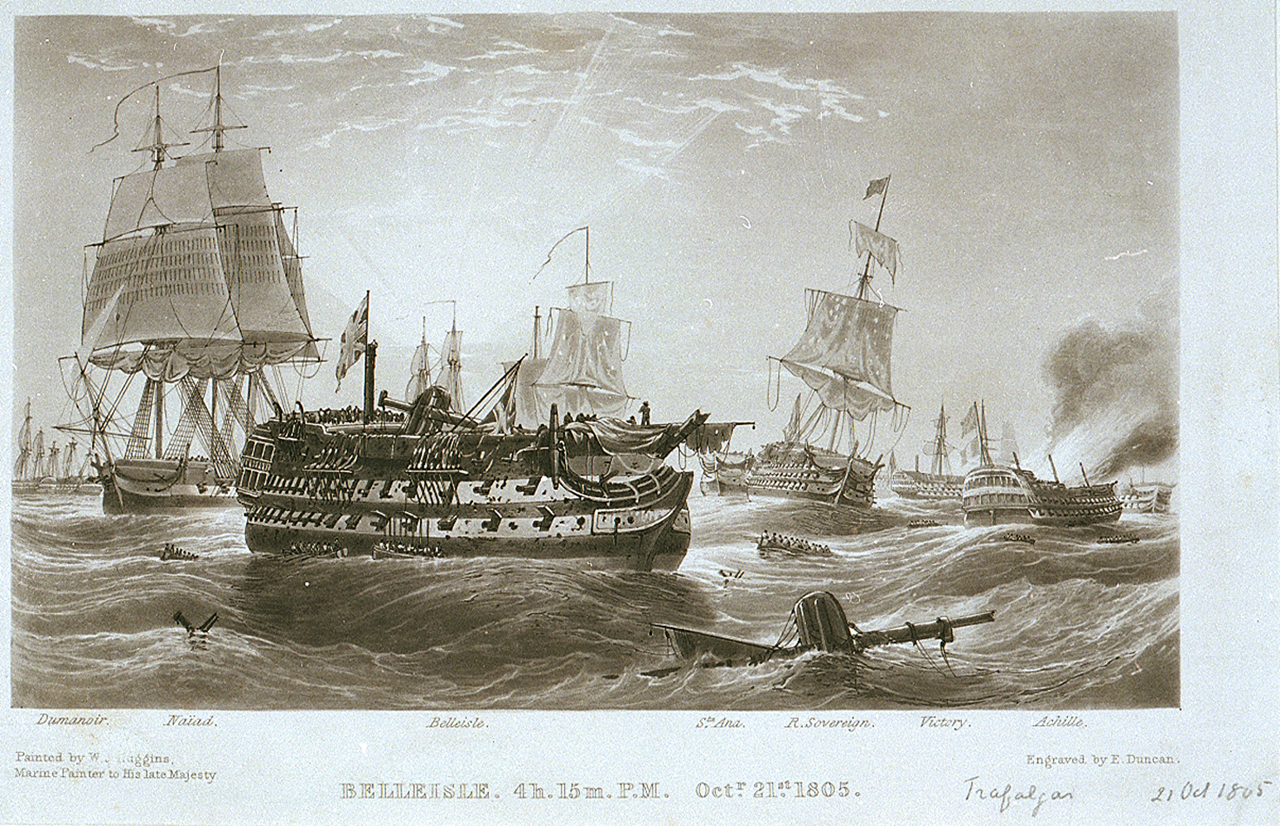|
William Rule (Surveyor Of The Navy)
Sir William Rule (c.1750–1816) was a shipbuilder and designer to the Royal Navy who rose to be Surveyor of the Navy. Designing during the Napoleonic Wars, many of his ships took place in the critical battles: Nile, Trafalgar, Copenhagen, etc. Life He was born in south England around 1750. He first appears in Royal Navy records in April 1778 as a Master Mastmaker at Woolwich Dockyard, however this position infers both an apprenticeship as a ships carpenter and a period in the dockyards as a standard mastmaker. In September 1778 he was promoted to Master Boatbuilder at Portsmouth Dockyard. In February 1779 he moved to Sheerness Dockyard, first as Master Shipwright then as Master Caulker. By 1787 he was Assistant Master Shipwright at Portsmouth Dockyard, and in March of that year was appointed Master Shipwright back at Sheerness Dockyard thereafter having overall charge of all ships constructed there, and from this point the Royal Navy list the ships built under his ch ... [...More Info...] [...Related Items...] OR: [Wikipedia] [Google] [Baidu] |
Ship Of The Line
A ship of the line was a type of naval warship constructed during the Age of Sail from the 17th century to the mid-19th century. The ship of the line was designed for the naval tactic known as the line of battle, which depended on the two columns of opposing warships maneuvering to volley fire with the cannons along their broadsides. In conflicts where opposing ships were both able to fire from their broadsides, the opponent with more cannons firingand therefore more firepowertypically had an advantage. Since these engagements were almost invariably won by the heaviest ships carrying more of the most powerful guns, the natural progression was to build sailing vessels that were the largest and most powerful of their time. From the end of the 1840s, the introduction of steam power brought less dependence on the wind in battle and led to the construction of screw-driven wooden-hulled ships of the line; a number of purely sail-powered ships were converted to this propulsion mech ... [...More Info...] [...Related Items...] OR: [Wikipedia] [Google] [Baidu] |
Snake-class Ship-sloop
The ''Snake-''class ship-sloops were a class of four Royal Navy sloops-of-war built in the late 18th and early 19th centuries.Winfield, Rif & Lyon, David (2004). '' The Sail and Steam Navy List: All the Ships of the Royal Navy 1815–1889''. London: Chatham Publishing. . OCLCbr>52620555 Though ships of the class were designed with the hull of a brig, their defining feature of a ship-rig changed their classification to that of a ship-sloop rather than that of a brig-sloop. Service history In December 1796 the Royal navy placed orders for four new sloops. The Navy Board considered two differing schools of design, one led by Sir William Rule and another by Sir John Henslow. To compare the qualities of ship-rigged and brig-rigged vessels, a ship of each design was to be completed as a ship-sloop and the other as a brig-sloop. In the end the Henslow designs won out, resulting in the ''Snake'' and ''Cruizer''-class being adopted into Royal Navy service. The ''Snake''-class ships we ... [...More Info...] [...Related Items...] OR: [Wikipedia] [Google] [Baidu] |
HMS Naiad (1797)
HMS ''Naiad'' was a Royal Navy fifth-rate frigate that served in the Napoleonic Wars. She was built by Hall and Co. at Limehouse on the Thames, launched in 1797, and commissioned in 1798. She served in the French Revolutionary and Napoleonic Wars, and her last actions occurred in 1824–5. She was paid off in 1826. She then served for many years in Latin America as a coal depot, first for the Royal Navy and then for the Pacific Steam Navigation Company. She was broken up in 1898, 101 years after her launching. Design ''Naiad'' was built to a design by Sir William Rule. She was an expanded version of his ''Amazon''-class frigates. French Revolutionary Wars Captain William Pierrepoint took command of ''Naiad'' in April 1797. On 3 April 1798 ''Naiad'' captured ''Mary and Elizabeth''. Sixteen days later, ''Naiad'', and were in sight when captured the French gun-brig ''Arrogante''. ''Arrogante'' was armed with six long 24-pounder guns and had a crew of 92 men. The British too ... [...More Info...] [...Related Items...] OR: [Wikipedia] [Google] [Baidu] |
HMS Acasta (1797)
HMS ''Acasta'' was a 40-gun Royal Navy fifth-rate frigate. She saw service in the French Revolutionary and Napoleonic Wars, as well as the War of 1812. Although she never took part in any notable single-ship actions nor saw action in a major battle though she was at the Battle of San Domingo, she captured numerous prizes and rid the seas of many Spanish, French and American privateers. She was finally broken up in 1821. Design Sir William Rule designed her to develop a frigate to replace the 44-gun ships that carried their armament on two decks. Consequently, she was one of the largest frigates built in England, mounting forty guns: thirty 18-pounders on one main gun deck, with another ten 9-pounder long guns on the quarterdeck and forecastle. Later eight 32-pounder carronades replaced the 9-pounder guns. She was launched at the yard of John Randall & Co., of Rotherhithe on 14 March 1797. French Revolutionary Wars ''Acastas'' first captain was Richard Lane, who took command in ... [...More Info...] [...Related Items...] OR: [Wikipedia] [Google] [Baidu] |
HMS Dragon (1798)
HMS ''Dragon'' was a 74-gun third rate ship of the line of the Royal Navy, launched on 2 April 1798 at Rotherhithe. She was designed by Sir William Rule, and was the only ship built to her draught. French Revolutionary Wars In 1799, she sailed to the Mediterranean as part of a squadron under Sir Charles Cotton. In February 1801 she was part of a squadron under Sir John Warren off Cadiz. Because ''Dragon'' served in the navy's Egyptian campaign between 8 March 1801 and 2 September, her officers and crew qualified for the clasp "Egypt" to the Naval General Service Medal that the Admiralty issued in 1847 to all surviving claimants. Napoleonic Wars In April 1803, ''Dragon'' was sailing from Gibraltar to Britain in company with and the store ship ''Prevoyante'' when they sighted two French ships of the line off Cape St. Vincent. The French ships veered off rather than engage the British vessels. On 18 June 1803, ''Dragon'' and captured the French naval 12-gun brig ''Colom ... [...More Info...] [...Related Items...] OR: [Wikipedia] [Google] [Baidu] |
Albatross-class Brig-sloop
The ''Albatross'' class were built as a class of eight 18-gun brig-sloops for the Royal Navy. They were originally to have carried sixteen 6-pounder carriage guns, but on 22 April 1795 it was instructed that they should be armed with sixteen 32-pounder carronades, although two of the 6-pounders were retained as chase guns in the bows. Consequently, they were classed as 18-gun sloops. However, in service it was found that this armament proved too heavy for these vessels, and so in most vessels the 32-pounder carronades were replaced by 24-pounder ones. The class was designed by one of the Surveyors of the Navy - William Rule - and approved on 22 April 1795. Five vessels to this design were ordered in March 1795; the prototype was named ''Pelican'' on 11 June 1795 and the other five names were assigned and registered on 20 June. Three more were ordered in July 1795; these were named and registered on 28 August. Construction In early 1795 the Admiralty identified the need for ad ... [...More Info...] [...Related Items...] OR: [Wikipedia] [Google] [Baidu] |
Merlin-class Sloop
The ''Merlin'' class was a class of twenty-one sloops of wooden construction built for the Royal Navy between 1743 and 1746. They were all built by contract with commercial builders to a common design prepared by Jacob Acworth, the Surveyor of the Navy The Surveyor of the Navy also known as Department of the Surveyor of the Navy and originally known as Surveyor and Rigger of the Navy was a former principal commissioner and member of both the Navy Board from the inauguration of that body in 15 ...; however, there was a difference, with a platform deck being constructed in the hold in ''Swallow'' (i), ''Merlin'', ''Raven'' and ''Swallow'' (ii), whereas the other seventeen had no platform and thus their depth in hold was nearly twice as much. Although initially armed with ten 6-pounder guns, this class was built with seven pairs of gunports on the upper deck, enabling them to be re-armed with fourteen 6-pounders later in their careers. The first two – ''Swallow'' and ''Merlin'' ... [...More Info...] [...Related Items...] OR: [Wikipedia] [Google] [Baidu] |
Caledonia-class Ship Of The Line
The ''Caledonia''-class ships of the line were a class of nine 120-gun first rates, designed for the Royal Navy by Sir William Rule. A tenth ship (''Royal Frederick'') was ordered on 29 October 1827 to the same design, but was launched in 1833 as ''Queen'' to a fresh design by Sir William Symonds. Armament In the original configuration, the armament of the ''Caledonia'' class was consistent for the first three ships of the class. The exception was an increase in firepower on the poop deck from 2 to 6 18-pounder carronades. Starting with the fourth ship, the armament of the class was significantly modified to adhere to the principle of a unified caliber of 32 pound. All guns on the middle and upper gun decks were replaced with the same number of 32-pounders. Except for two 24-pounders on the middle deck that were replaced by two 8 inch shell guns. Four of the 12-pounder guns on the quarterdeck were replaced with 32-pounder carronades. The remaining two were increased to 18-po ... [...More Info...] [...Related Items...] OR: [Wikipedia] [Google] [Baidu] |
Frigate
A frigate () is a type of warship. In different eras, the roles and capabilities of ships classified as frigates have varied somewhat. The name frigate in the 17th to early 18th centuries was given to any full-rigged ship built for speed and maneuverability, intended to be used in scouting, escort and patrol roles. The term was applied loosely to ships varying greatly in design. In the second quarter of the 18th century, the 'true frigate' was developed in France. This type of vessel was characterised by possessing only one armed deck, with an unarmed deck below it used for berthing the crew. Late in the 19th century (British and French prototypes were constructed in 1858), armoured frigates were developed as powerful ironclad warships, the term frigate was used because of their single gun deck. Later developments in ironclad ships rendered the frigate designation obsolete and the term fell out of favour. During the Second World War the name 'frigate' was reintroduced to des ... [...More Info...] [...Related Items...] OR: [Wikipedia] [Google] [Baidu] |
Amazon-class Frigate (1795)
Four classes of frigate of the Royal Navy have been named the ''Amazon'' class: *The frigates of 1773, made up of 32-gun fifth rates with a main battery of 12-pounder guns, it comprised eighteen ships; ''Amazon'', ''Ambuscade'' and ''Thetis'' were launched in 1773; the second batch – ''Cleopatra'', ''Amphion'', ''Orpheus'', ''Juno'', ''Success'', ''Iphigenia'', ''Andromache'', ''Syren'', ''Iris'', ''Greyhound'', ''Meleager'', , ''Solebay'', and ''Blonde'' – were launched in 1779 to 1787 *The frigates of 1795 consisted of four 36-gun fifth rates with a main battery of 18-pounder guns: and launched in 1795, and and launched in 1796; ''Trent'' and ''Glenmore'' were constructed of "fir" (Pitch pine) *The frigates of 1799, made up of 38-gun fifth rates with a main battery of 18-pounder guns, it comprised two ships – and . both launched in 1799 *The ''Amazon''-class frigates, or Type 21 frigates, comprising eight ships – ''Amazon'', ''Antelope'', ''Active'', ''Ambuscad ... [...More Info...] [...Related Items...] OR: [Wikipedia] [Google] [Baidu] |



